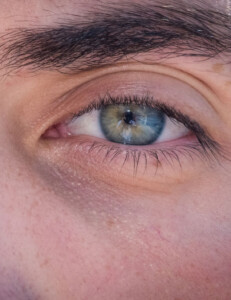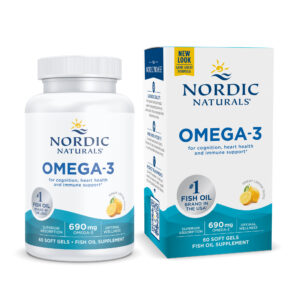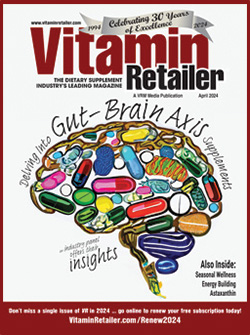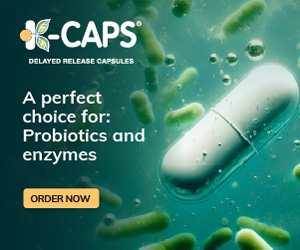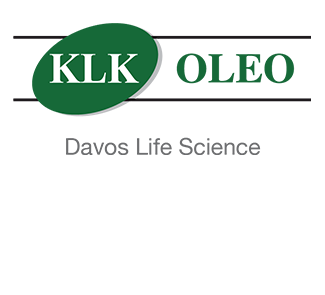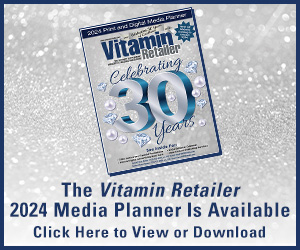As age and technology affect our eyes, proactive measures to maintain vision health become increasingly more important.
Vision loss causes a substantial social and economic toll for millions of people including significant suffering, disability, loss of productivity and diminished quality of life, according to the Centers for Disease Control (CDC).
The CDC also stated that, as of 2004, blindness or low vision affects more than 3.3 million Americans aged 40 years and older. This number is predicted to double by 2030 due to the increasing epidemics of diabetes, other chronic diseases and our rapidly aging U.S. population.
“The category is positioned for continued growth because of an increasing aging population and new concerns among younger age groups that potentially increases their need for vision health products,” said Lynda M. Doyle, MS human nutrition, vice president of global marketing for New Jersey-based OmniActive Technologies.
The NBJ Supplement Business Report, 2015, noted that vision health in the U.S. more than doubled from $224 million in 2006 to $447 million in 2014.
“It [the vision market] is changing with more individuals becoming more aware and many insurance companies are eliminating vision coverage,” said Yolanda Heath, owner of Heath Health Foods in Paducah, KY.
However, Randy Mullins, CFO of Healthsmart Natural Product Stores in Beckley, WV, said that there hasn’t been a huge increase in customers looking for vision health products. He did note a slight increase in people becoming more aware of their eye health because of the latest advancements in eye care.
In fact, according to Anne Marie Akers, inventory control coordinator and tech support, for Cornucopia, Inc./Nature’s Bin located in Lakewood, OH, dryness is the most common issue that their store encounters. “We have had several customers come in after having cataract surgery or who are experiencing other issues such as dryness.” Although these requests are not everyday occurrences.
“With the quality of eye care currently available to the customer, the market should stay somewhat even for now. With standard check-ups and more people turning to Lasik, eye care quality is at a good point right now,” Mullins continued.
AMD
Texas-based ophthalmologist Marc Ellman, MD, founder and president of LuxVite Naturals in Nevada, said he sees the market for vision health products strengthening. The market “will only increase as the Baby Boomers become more concerned about aging eye issues such as age-related macular degeneration (AMD) and cataracts,” he noted.
While cataracts are easily cured with surgery, Ellman said, macular degeneration has no cure and because of that, is the leading cause of blindness in the U.S.
AMD is a common eye condition and leading cause of vision loss among people 50 and older, according to the National Eye Institute (NEI). Damage occurs in the macula, a small spot near the center of the retina, which is the part needed for sharp, central vision. The macula lets us see objects that are straight ahead.
AMD can advance slowly so that vision loss does not happen right away or even for a long time, but in other cases the disease progresses quickly, leading to vision loss in one or even both eyes.
The CDC reported that more than 70 percent of survey respondents, from the National Eye Health Education Program (NEHEP) 2005 Public Knowledge, Attitudes and Practices survey, consider that their loss of eyesight would have the greatest impact on their day-to-day life; however, less than 11 percent knew that there are no early warning signs of glaucoma and diabetic retinopathy.
In 1996, Dr. Rodney Horton was frustrated with the fact that a diagnosis of macular degeneration was not a matter of if a person was going to go blind, but when, said Ed Bisconti, retail sales manager for Medop Health Inc., manufacturers of Florida-based MaxiVision. “Through his own research and consultation with key opinion leaders at St. Luke’s Cataract Center, Horton developed MaxiVision eye supplements.”
MaxiVision eye supplements focus on building macular pigment density, Bisconti explained. “Within the small area of your macula there is pigment, like the pigment in your skin, that helps prevent damage to the macula from light radiations entering the front of the eye. MaxiVision contains high concentrations of the carotenoids lutein and zeaxanthin that help the body replenish this pigment, therefore preventing damage and eventual vision loss,” Bisconti said.
Out of more than 600 carotenoids, which are naturally occurring pigments synthesized by plants, algae and photosynthetic bacteria found in nature, only three are found in the macula: lutein, RR-zeaxanthin and RS (meso)-zeaxanthin. Lutein is deposited in the periphery of the macula, RR-zeaxanthin in the mid-periphery and RS (meso)-zeaxanthin in the center of the macula, where the highest level of oxidative stress occurs, Doyle explained.
“Very few supplements supply all three macular carotenoids at significant levels and healthy eyes require more than just lutein and RR-zeaxanthin,” she continued. Supplementing with all three macular carotenoids for healthy vision over a lifetime is important.
Environmental Factors
AMD and cataracts are the two most common vision health concerns Ellman sees in his practice. “Both of these are closely related to age, but ultraviolet light exposure and other environmental factors certainly play a role.” Diet, obesity, smoking, environmental pollution and exposure to the sun also affect vision health.
Aside from supplementation, eating a diet rich in fruits and vegetables, particularly dark and leafy greens, and omega-3 fatty acids have been shown to help keep eyes healthy.
“Spinach, kale, wheat germ and Brussels sprouts are all good foods for eye health,” Mullins added.
Maintaining a healthy weight can also aid in healthy vision—being overweight or obese increases the risk of issues that can lead to vision loss, such as diabetic eye disease or glaucoma. Another important tip includes wearing protective eyewear, like sunglasses. According to NEI, customers should look to purchase sunglasses that block out 99 to 100 percent of both UV-A and UV-B radiation.
“With the rise in use of digital devices, there is a growing concern of how and to what extent high-energy blue light affects eye health. High-energy blue light is part of the visible spectrum of light that bombards our eyes daily and, unlike ultraviolet light, reaches deep into the eye and can harm the macula,” Doyle said. A steadily rising concern among younger generations is the increased use of digital devices such as iPads, computers and smart phones.
Doyle noted that Millennials are one of the largest opportunities for eye health formulas. “Born after 1980, the Millennia’s ‘digital lifestyle’ increases exposure to high-energy blue light and increases their risk for digital eye strain.”
Short-term exposure can lead to eye fatigue, also referred to as “digital eye strain,” and is characterized by dry eyes, blurry vision, headaches and/or neck and shoulder pain, Doyle continued. According to a 2015 report by The Vision Council, 68 percent of Millennials reported digital eyestrain symptoms.
NEI suggests using the 20-20-20 rule for those who use the computer for long stretches each day. Every 20 minutes users should look away from their computer at something about 20 feet from them for about 20 seconds. This exercise can help reduce eyestrain. Long-term exposure can lead to a progressive loss of visual function.
A Concern for Every Age
While vision products normally appeal to older buyers as they become more aware and concerned with eye diseases, younger individuals are also realizing the importance of eye health, particularly with the understanding of prolonged use of digital devices.
“There is a campaign by OmniActive (makers of Lutemax2020 which we use in LuxVite Naturals Vision Protect) about the importance of lutein even at younger ages,” Ellman said.
“Currently, we have two consumer websites focused on the importance of early and consistent intake of the macular carotenoids to maintain healthy vision for a lifetime,” said Doyle.
LuteinForEveryAge.org is the company’s U.S. site while VisionVitalize.eu specifically targets the European consumer. Both sites include a quiz that helps people gauge how their lifestyle is effecting their vision as well as tips on how supplementing with lutein and zeaxanthin isomers can help maintain healthy vision.
Lutein For Every Age is focused on raising awareness about the importance of early and consistent lutein intake to help maintain proper eye health throughout a person’s life. The campaign will help consumers understand how to take a proactive approach to maintain healthy vision and learn about lutein’s role in skin and cognitive health, as well as overall wellness.
“There is compelling science indicating that lutein and the zeaxanthin isomers work best with consistent intake starting in childhood and maintaining a diet or a supplement regimen throughout life,” Doyle said.
A Sampling of Products
In 2005, Missouri-based Hyalogic began offering a complete eye nutrient formula, according to Darren Landis, product sales for Hyalogic. “Our product [HylaVision – Eye Support] helps with limiting the oxidative damage that the eye experiences and at the same time, it helps to maintain a healthy fluid balance in the eye by adding the hyaluronic acid,” Landis said.
Over the years, MaxiVision has adjusted its formulations to reflect that latest standard of care set by studies such as the AREDS2, Bisconti said.
MaxiVision is not alone, LuxVite Naturals Vision Protect is also based off the AREDS2 study. This study began as Age-Related Eye Disease Study (AREDS), which was sponsored by the National Eye Institute and found that a supplement containing vitamin C, vitamin E, beta-carotene, zinc and copper could reduce the risk of developing AMD by about 25 percent, Ellman explained.
In 2006, the same research group began a second study, titled AREDS2, to determine if they could improve the AREDS formulation. The finding from this study showed that lutein and zeaxanthin together appeared to be a safe and effective alternative to beta-carotene, which has been linked to cancer in smokers.
LuxVite Naturals Vision Protect contains the exact same ingredients as the AREDS2 trial, except it contains less zinc. This is because one arm of the AREDS2 study showed no difference in efficacy. Vision Protect also includes vitamins B6, B12 and folate, according to Ellman, which have also been shown to be a benefit to reducing the risk for macular degeneration and other eyes diseases.
Products that retailers are suggesting to customers include Carlson’s Super Omega 3 for Cornea and Nordic Naturals’ Arctic Cod Liver Oil for eye maintenance—both contain DHA. “DHA is an essential nutrient for proactive support for eye health,” Mullins stated.
Other product suggestions included Lutein, Zeaxathanin, Visual Eyes by Source Naturals, Bilberry and Advanced Eye Factors by Natural Factors. “I recommend flaxseed for dryness and a multiple such as American Health More Than a Multiple with vision support. If the customer is already using a multivitamin I may recommend a product such as Vision Sharp from Irwin or Ocuguard from Twinlabs. These products contain lutein, eyebright, bilberry, zeaxanthin and minerals known to benefit the eyes,” Akers shared.
Eye Health in Retail
Customers are becoming increasingly savvy, Doyle stated, many of them taking proactive steps by researching options to support optimal health. By keeping current and relevant health information available to their customers, retailers can enhance sales in their vision health products. Brochures and pamphlets, as well as health magazines are utilized at Heath Health Foods to help inform customers about the products offered, Heath said.
“We use a structure/function method to help our customers find the right product for them. Items such as placards and shelf talkers are very helpful in supplying information they need to make an informed purchase,” Mullins agreed.
Retailers seeking to enhance the sale of vision health products would be wise to become familiar with the important eye health studies, like AREDS2, to help their customers select the most appropriate supplements.
“Retailers should also be aware of the link between beta-carotene and lung cancer in smokers, as many eye supplements still contain beta-carotene despite AREDS2 demonstrating that it could be replaced by lutein and zeaxanthin,” Ellman stressed.
“We [Nature’s Bin] haven’t received very much in the way of signage or training on eye care products. I have researched it on my own to be able to help customers effectively. Some signage as well as vendor training for our staff would be welcome,” Akers said.
Akers also revealed that while she does not refer to any specific studies, she does utilize Prescription to Nutritional Healing as a reference. The book is a reference by Phyllis A. Balch, CNC, incorporating a variety of alternative healing and preventative therapies, remedies and talks about differing uses for vitamins and minerals as well as herbs and food supplements, alongside 21st-century science.
Retailers are not alone in the effort to provide useful information on general eye health and individual products. MaxiVision offers samples and brochures to their retailers, as well as a customer service department that can assist with both questions and verbiage to better explain and present MaxiVision to customers, Bisconti said.
Hyalogic offers bag stuffers, booklets and education posters, while LuxVite Naturals provides shelf cards with more information, retail boxes with eye health tips and an educational video for retailers to learn more about Vision Protect and eye health.
“As always, the best tip to increasing sales, especially with a supplement that focuses on a specific area of the body, is education,” Bisconti said. “Learning the basic functionality of the eye as it pertains to an eye supplement is very important to presenting the supplement in a way that makes the customer understand why they need this product over others.”
“As research revealing the positive health benefits of lutein, RR-zeaxanthin and RS (meso)-zeaxanthin continue to grow, so does consumer awareness of the need to incorporate these powerful eye health nutrients into daily supplementation,” Doyle concluded. VR
For More Information:
Hyalogic, (866) 318-8484
LuxVite Naturals, (855) LUXVITE
Medop Health Inc., (888) 290-6294
OmniAvtice Technologies, (866) 588-3629
Extra! Extra!
Video: Healthy Vision Tip—Get a Dilated Eye Exam
Video: Healthy Vision Tip—Live a Healthy Lifestyle
Video: Healthy Vision Tip—Know Your Family History
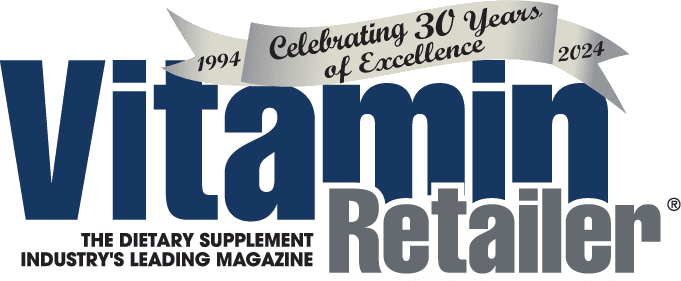


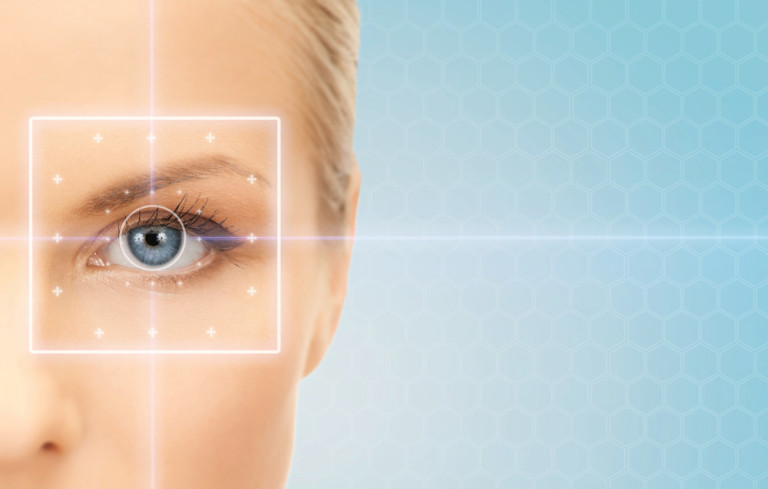
![[Sponsored Video] Special Report: Bergamonte®, the Untold Story](https://vitaminretailer.com/wp-content/uploads/2023/06/sponsored-video-special-report-b-300x169-1707947265.jpg)

